| Revision as of 02:56, 18 August 2010 edit94.168.252.114 (talk)No edit summary← Previous edit | Revision as of 03:00, 18 August 2010 edit undo94.168.252.114 (talk)No edit summaryNext edit → | ||
| Line 1: | Line 1: | ||
| ], an Ottoman admiral]] | ], an Ottoman admiral]] | ||
| The '''Barbary ]s''', sometimes called '''Ottoman Corsairs''' or '''Barbary Pirates''', were ] ]s and ]s who operated from ], based primarily in the ports of ], ] and ]. This area was known in ] as the ], a term derived from the name of its ] inhabitants. Their predation extended throughout the ], |
The '''Barbary ]s''', sometimes called '''Ottoman Corsairs''' or '''Barbary Pirates''', were ] ]s and ]s who operated from ], based primarily in the ports of ], ] and ]. This area was known in ] as the ], a term derived from the name of its ] inhabitants. Their predation extended throughout the ],,<ref>A 44-gun algerian privateer appeared at Río de la Plata in 1720. ], ''Armada española desde la unión de los reinos de Castilla y de León'', Madrid, 1902, Vol. VI, p. 185</ref> and into the ] as far north as ], but they primarily operated in the western Mediterranean. In addition to seizing ships, they engaged in '']s'', raids on European coastal towns and villages, mainly in Italy, Spain, and Portugal, but also France, Britain, the ], ], and as far away as ]. The main purpose of their attacks was to capture ] ] for the ].<ref name="bbc.co.uk">{{cite web |url=http://www.bbc.co.uk/history/british/empire_seapower/white_slaves_02.shtml |title=British Slaves on the Barbary Coast}}</ref> | ||
| While such raids had occurred since soon after the Muslim conquest of the region, the terms ''Barbary Pirates'' and ''Barbary Corsairs'' are normally applied to the raiders active from the 16th century onwards, when the frequency and range of the slavers' attacks increased and Algiers, Tunis and Tripoli came under the sovereignty of the ], either as directly administered provinces or as autonomous dependencies known as the ]. Similar raids were undertaken from ] and other ports in ], but strictly speaking Morocco, which never came under Ottoman dominance, was not one of the Barbary States. | While such raids had occurred since soon after the Muslim conquest of the region, the terms ''Barbary Pirates'' and ''Barbary Corsairs'' are normally applied to the raiders active from the 16th century onwards, when the frequency and range of the slavers' attacks increased and Algiers, Tunis and Tripoli came under the sovereignty of the ], either as directly administered provinces or as autonomous dependencies known as the ]. Similar raids were undertaken from ] and other ports in ], but strictly speaking Morocco, which never came under Ottoman dominance, was not one of the Barbary States. | ||
Revision as of 03:00, 18 August 2010
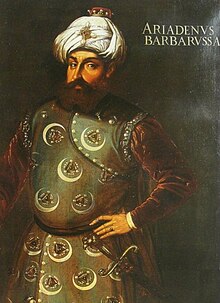
The Barbary Corsairs, sometimes called Ottoman Corsairs or Barbary Pirates, were Muslim pirates and privateers who operated from North Africa, based primarily in the ports of Tunis, Tripoli and Algiers. This area was known in Europe as the Barbary Coast, a term derived from the name of its Berber inhabitants. Their predation extended throughout the Mediterranean,, and into the North Atlantic as far north as Iceland, but they primarily operated in the western Mediterranean. In addition to seizing ships, they engaged in Razzias, raids on European coastal towns and villages, mainly in Italy, Spain, and Portugal, but also France, Britain, the Netherlands, Ireland, and as far away as Iceland. The main purpose of their attacks was to capture Christian slaves for the Islamic market in North Africa and the Middle East.
While such raids had occurred since soon after the Muslim conquest of the region, the terms Barbary Pirates and Barbary Corsairs are normally applied to the raiders active from the 16th century onwards, when the frequency and range of the slavers' attacks increased and Algiers, Tunis and Tripoli came under the sovereignty of the Ottoman Empire, either as directly administered provinces or as autonomous dependencies known as the Barbary States. Similar raids were undertaken from Salé and other ports in Morocco, but strictly speaking Morocco, which never came under Ottoman dominance, was not one of the Barbary States.
Pirates captured thousands of ships, and long stretches of coast in Spain and Italy were almost completely abandoned by their inhabitants, discouraging settlement until the 19th century. From the 16th to 19th century, pirates captured an estimated 800,000 to 1.25 million people as slaves. The most famous corsairs were the brothers Hayreddin Barbarossa ("Redbeard") and Oruç Reis, who took control of Algiers on behalf of the Ottomans in the early 16th century. The adoption of European sailing and shipbuilding techniques around 1600 enabled the corsairs to extend their activities into the Atlantic Ocean, and the impact of Barbary raids peaked in the early to mid-seventeenth century.
The scope of corsair activity began to diminish in the latter part of the seventeenth century, as the more powerful European navies started to compel the Barbary States to make peace and cease attacking their shipping. However, the ships and coasts of Christian states without such effective protection continued to suffer until the early nineteenth century. Following the Napoleonic Wars and the Congress of Vienna in 1814-5 European powers agreed upon the need to suppress the Barbary corsairs entirely and the threat was largely subdued, although occasional incidents continued until finally terminated by the French conquest of Algiers in 1830.
History
16th century
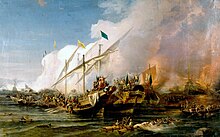
The conquest of Granada by the Catholic sovereigns of Spain in 1492 drove many Moors into exile. They retaliated by piratical attacks on the Spanish coast, with help from Muslim adventurers from the Levant, of whom the most successful were Hızır and Oruç, natives of Mitylene. In response, Spain began to conquer the coast towns of Oran, Algiers and Tunis. But after Oruç was killed in battle with the Spaniards in 1518, his brother Hızır appealed to Selim I, the Ottoman Sultan, who sent him troops. In 1529, Hızır drove the Spaniards from the rocky, fortified island in front of Algiers, and founded the Ottoman power in the region. From about 1518 till the death of Uluch Ali in 1587, Algiers was the main seat of government of the beylerbeys of northern Africa, who ruled over Tripoli, Tunisia and Algeria. From 1587 to 1659, they were ruled by Ottoman pashas, sent from Constantinople to govern for three years; but in the latter year a military revolt in Algiers reduced the pashas to nonentities. From 1659, these African cities, although nominally part of the Ottoman Empire, were in fact military republics which chose their own rulers and lived by plunder.
During the first period (1518–1587), the beylerbeys were admirals of the sultan, commanding great fleets and conducting war operations for political ends. They were slave-hunters and their methods were ferocious. After 1587, the sole object of their successors became plunder, on land and sea. The maritime operations were conducted by the captains, or reises, who formed a class or even a corporation. Cruisers were fitted out by capitalists and commanded by the reises. Ten percent of the value of the prizes was paid to the pasha or his successors, who bore the titles of agha or dey or bey.

In 1544, Hayreddin captured the island of Ischia, taking 4,000 prisoners, and enslaved some 9,000 inhabitants of Lipari, almost the entire population. In 1551, Turgut Reis enslaved the entire population of the Maltese island Gozo, between 5,000 and 6,000, sending them to Libya. In 1554, pirates sacked Vieste in southern Italy and took an estimated 7,000 slaves. In 1555, Turgut Reis sacked Bastia, Corsica, taking 6,000 prisoners. In 1558, Barbary corsairs captured the town of Ciutadella (Minorca), destroyed it, slaughtered the inhabitants and took 3,000 survivors to Istanbul as slaves. In 1563, Turgut Reis landed on the shores of the province of Granada, Spain, and captured coastal settlements in the area, such as Almuñécar, along with 4,000 prisoners. Barbary pirates often attacked the Balearic Islands, and in response many coastal watchtowers and fortified churches were erected. The threat was so severe that the island of Formentera became uninhabited.
Even at this early stage, the European states fought back: Livorno's monument Quattro Mori celebrates 16th century victories against the Barbary corsairs won by the Knights of Malta and the Order of Saint Stephen, of which the Grand Duke of Tuscany Ferdinando I de' Medici was Grand Master. Another response was the construction of the original frigates; light, fast and manoueverable galleys, designed to run down Barbary pirates trying to get away with their loot and slaves. Other measures included coastal lookouts to give warning for people to withdraw into fortified places and rally local forces to fight the pirates, though this latter objective was especially difficult to achieve as the pirates had the advantage of surprise; the vulnerable European Mediterranean coasts were very long and easily accessible from the north African Barbary bases, and the pirates were careful in planning their raids.
17th century

The first half of the 17th century saw the peak of Barbary raiding. This was due largely to the contribution of Dutch corsairs, notably Simon de Danser, who used the barbary ports as bases for attacking Spanish shipping during the Dutch Revolt. They cooperated with local raiders and introduced them to the latest Dutch sailing rigs, enabling them to brave Atlantic waters. Some of these Dutch corsairs converted to Islam and settled permanently in North Africa. Two examples are Süleyman Reis, "De Veenboer", who became admiral of the Algerian corsair fleet in 1617, and his quartermaster Murat Reis, born Jan Janszoon. Both worked for the notorious corsair Zymen Danseker, who owned a palace.
In 1607, the Order of Malta went on the offensive with forty-five galleys, capturing and pillaging the city of Bona in Algeria. This victory is commemorated by a series of frescoes painted by Bernardino Poccetti in the "Sala di Bona" of Palazzo Pitti, Florence.

Barbary pirate attacks were common in southern Portugal, south and east Spain, the Balearic Islands, Sardinia, Corsica, Elba, the Italian Peninsula (especially the coasts of Liguria, Tuscany, Lazio, Campania, Calabria and Apulia), Sicily and Malta. They also occurred on the Atlantic northwest coast of the Iberian Peninsula. In 1617, the African corsairs launched their major attack in the region when they destroyed and sacked Bouzas, Cangas and the churches of Moaña and Darbo.
Occasionally coastal raids reached farther afield. Iceland was subject to raids in 1627. Jan Janszoon, (Murat Reis the Younger) is said to have taken 400 prisoners; 242 of the captives later were sold into slavery on the Barbary Coast. The pirates took only young people and those in good physical condition. All those offering resistance were killed, and the old people were gathered into a church which was set on fire. Among those captured was Ólafur Egilsson, who was ransomed the next year and, upon returning to Iceland, wrote a slave narrative about his experience.
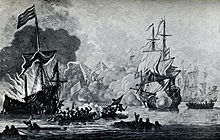
Ireland was subject to a similar attack. In June 1631 Murat Reis, with pirates from Algiers and armed troops of the Ottoman Empire, stormed ashore at the little harbor village of Baltimore, County Cork. They captured almost all the villagers and took them away to a life of slavery in North Africa. The prisoners were destined for a variety of fates — some lived out their days chained to the oars as galley slaves, while others would spend long years in the scented seclusion of the harem or within the walls of the sultan's palace. Only two of them ever saw Ireland again.
More than 20,000 captives were said to be imprisoned in Algiers alone. The rich were often able to secure release through ransom, but the poor were condemned to slavery. Their masters would on occasion allow them to secure freedom by professing Islam. A long list might be given of people of good social position, not only Italians or Spaniards, but German or English travelers in the south, who were captives for a time. While the chief victims were the inhabitants of the coasts of Sicily, Naples and Spain, all traders of nations which did not pay tribute for immunity or force the Barbary States to leave them alone were liable to be taken at sea. Religious orders — the Redemptorists and Lazarists — worked for the redemption of captives, and large legacies were left for that purpose in many countries.
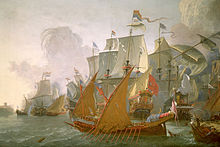
The continuation of piracy was assisted by competition among European powers. France encouraged the pirates against Spain, and later Britain and Holland supported them against France. By the second half of the seventeenth century the greater European naval powers were able to strike back effectively enough to intimidate the Barbary States into making peace with them. However, those countries' commercial interests then benefited from the impact of continuing attacks on their competitors, and as a result there was little interest in imposing a more general cessation of corsair activity. The most successful of the Christian states in dealing with the corsair threat was England. During the reign of Charles II, a series of English expeditions won victories over raiding squadrons and mounted attacks on their home ports which permanently ended the threat to English shipping. In 1675 a Royal Navy squadron led by Sir John Narborough negotiated a lasting peace with Tunis and, after bombarding the city to induce compliance, with Tripoli. Peace with Sale followed in 1676. A treaty with Algiers, most powerful of the Barbary States, had been secured in 1671, but this was exploited by foreign ships which posed as English to escape attack. As a result war between England and Algiers resumed in 1677, but further defeats at the hands of an English squadron under Arthur Herbert forced Algiers to make peace again in 1682, in a treaty which would last until 1816. The French also achieved considerable success in these years, bombarding Algiers in 1682 and 1683.
18th-19th centuries
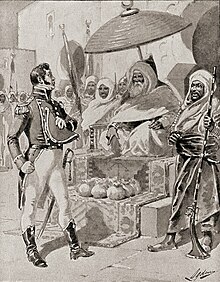
In 1783 and 1784 it was the turn of Spaniards to bombard Algiers. The second time, admiral Barceló damaged the city so severely that the Algerian Dey asked Spain to negotiate a peace treaty and from then on Spanish vessels and coasts were safe for several years.
Until the Declaration of Independence in 1776 British treaties with the North African states protected American ships from the Barbary corsairs. Morocco, which in 1777 was the first independent nation to publicly recognize the United States, became in 1784 the first Barbary power to seize an American vessel after independence. The Barbary threat led directly the creation of the United States Navy in March 1794. While the United States managed to secure peace treaties these obliged it to pay tribute for protection from attack. Payments in ransom and tribute to the Barbary states amounted to 20% of United States government annual expenditures in 1800. Two wars in 1801-5 and 1815 led to more favourable peace terms ending the payment of tribute, but Algiers broke the 1805 peace treaty after only two years, and subsequently refused to implement the 1815 treaty until compelled to do so by Britain in 1816.
The Congress of Vienna in 1814-5, which ended the Napoleonic Wars, led to increased consensus on the need to achieve a general halt to Barbary raiding. The sacking of Palma on the island of Sardinia by a Tunisian squadron, which carried off 158 inhabitants, roused widespread indignation. Britain had by this time banned the slave trade and was seeking to induce other countries to do likewise. This led to complaints from states which were still vulnerable to the corsairs to stopping the enslavement of Europeans by the Barbary States.
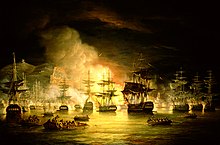
In order to neutralise this objection and further the anti-slavery campaign, in 1816 Lord Exmouth was sent to secure new concessions from Tunis and Algiers. On his first visit he negotiated a satisfactory treaty and sailed for home. While he was negotiating, a number of Sardinians, whose territory was at that time under British protection, had been brutally treated at Bona, without his knowledge. The British government sent him back to secure reparation, and on August 17, in combination with a Dutch squadron under Admiral Van de Capellen, he bombarded Algiers. The lesson terrified the pirates both of that city and of Tunis into giving up over 3,000 prisoners and making fresh promises. Within a short time, however, Algiers renewed its slave-raiding, though on a smaller scale, and the measures to be taken with the city's government were discussed at the Congress of Aix-la-Chapelle in 1818. In 1824 another British fleet under Admiral Sir Harry Neal again bombarded Algiers. The city remained a haven for and source of pirates until its conquest by France in 1830.
Barbary slaves
While Barbary corsairs naturally looted the cargo of ships they captured, their primary goal was to capture prisoners on land or at sea and turn them into slaves. Once captured, the slaves were often sold or put to work in various ways in North Africa.
It has been estimated that between 1530 and 1780 some one million, or one and a quarter million Europeans were captured and made slaves in North Africa, principally in Algiers, Tunis, and Tripoli, with further captives in Istanbul and Sallee.
The high point of slave trade was between 1605 and 1634, when there were 35,000 captive slaves at any given time in Algiers, Tunis, and Tripoli. Furthermore, because of the high mortality rate in slaves, there was always a constant demand for more. The intelligent corsairs would raid ships or coastal areas and grab as many people as they possibly could. Then, they would come back a few days later and sell the villagers their own people back. If the families of the captives could not afford their family member back, merciless financiers would come and offer the families the extra cash they needed in exchange for their houses and land. If the families could not meet the deadline to get their family member back, it was of little concern to the corsairs, who knew they could sell the captives for a lot more money in the North African slave markets. However, they benefited from getting the family's ransom because it meant instant cash for them.

Being captured was just the first part of a slave's nightmare journey. Many slaves died on the ships during the long voyage back to North Africa due to disease or lack of food and water. For the "lucky" ones that did survive the journey, they were made a spectacle of as they walked through town on their way to the slave auction. The slaves would then have to stand from eight in the morning until two in the afternoon while buyers passed by and viewed them. Next came the auction, where the townspeople would bid on the slaves they wanted to purchase and once that was over, the governor of Algiers (the Dey) had the chance to purchase any slave he wanted for the price they were sold at the auction. During these auctions, the slaves would be forced to run and jump around to show their strength and stamina. After purchase, these slaves would either become slaves for ransom, or they would be put to work. There were a wide variety of jobs slaves had, from hard manual labor to doing housework (the job that almost all women slaves got). At night the slaves were put into prisons called 'bagnios' that were often hot and overcrowded. However, these bagnios began improving by the 1700s, and some bagnios had chapels, hospitals, shops, and bars run by slaves. Here, slaves were treated a little more fairly and were given the opportunity to run small businesses, and in some cases, make a small profit.
Galley slaves
Although the conditions in bagnios were harsh, they were nothing compared to what galley slaves had to go through. A galley is a ship that could be propelled solely by human power, and that is exactly what Barbary pirates had the slaves do. Barbary galleys were at sea for around eighty to a hundred days a year, so the slaves were not on them constantly, but when they were not rowing the galleys they were forced to do difficult manual labor on land. However, there were some exceptions; "galley slaves of the Ottoman Sultan in Istanbul would be permanently confined to their galleys, and often served extremely long terms, averaging around nineteen years in the late seventeenth-century and early eighteenth-century periods. And these slaves simply rarely got off the galley but lived there for years." During this time, rowers were shackled and chained where they sat, and were never allowed to leave. Sleeping (which was limited), eating, defecation and urination took place at the seat to which they were shackled. There was normally around five or six rowers on each oar, but this did not mean that any of the slaves could get away with any lack of effort. Overseers would walk back and forth and whip the slaves who were not rowing up to par.
Freedom for slaves
Barbary slaves could hope to be freed through payment of a ransom. Despite the efforts of middlemen and charities to raise money to provide ransoms, they were still very difficult to come by. Just as charity funding for slave ransoms increased, North African states kept increasing the amount of money that each slave was worth. However, lack of money was not the only problem standing between slaves and their freedom. Slaves would often need to notify their families that they were captive and inform them of the ransom price, and they would also need to pay the hefty mailing charge (which few slaves could afford) and wait several months for the mail to be delivered.
For the slaves and their families who were able to come up with the money, actually returning home was not guaranteed either. Redeemed slaves often went through a port to wait for the ransom to be finalized, and in some cases in the seventeenth and eighteenth centuries, slaves were kept at these ports as a quarantine due to fear of the plague.
Clearly, not many barbary slaves could depend on being rescued by ransoms, and instead had to look for the chance to escape. This was obviously easier said than done, since only a handful of slaves were actually able to escape. The most famous of runaway slaves was Thomas Pellow, who had the story of his journey published in 1740. After several failed attempts (which nearly resulted in his death), Pellow was finally able to escape to Gibraltar in July 1738.

Famous Barbary corsairs
| This section does not cite any sources. Please help improve this section by adding citations to reliable sources. Unsourced material may be challenged and removed. (October 2009) (Learn how and when to remove this message) |
The Barbarossa Brothers
Oruç Barbarossa
The most famous of the pirates in North Africa were the four Barbarossa brothers, who all became Barbary corsairs. However, only two of the Barbarossas became famous, Oruç and Hızır Hayreddin. Oruç, the oldest who gave the Barbarossas their name because of his red beard, captured the island of Djerba for the Ottoman Empire in 1502 or 1503. Often, Oruç would attack Spanish territories on the coast of North Africa, and during one failed attempt in 1512, Oruç lost his left arm to a cannon ball. The oldest Barbarossa would also go on a rampage through Algiers in 1516 and capture the town with the help of the Ottoman Empire. He executed the ruler of Algiers and everybody he suspected would oppose him, including local rulers. However, his ruthlessness and high taxes turned Algiers against him, and he was finally captured and killed by the Spanish in 1518 and put on display.
Hızır Hayreddin Barbarossa
However, Oruç was not the most famous pirate of the Barbarossas since he was more of a land-based criminal. His youngest brother Hızır (later named Hayreddin, pronounced Kheir ed-Din) was a more traditional pirate, and was actually a more capable pirate as he was a clever engineer and spoke at least six languages. But Hızır was obviously very fond of his eldest brother, and dyed his hair and beard with a reddish tint to honor Oruç. After capturing many crucial coastal areas, Hayreddin was appointed admiral in chief of the Ottoman sultan's fleet. Under Hızır's command, the Ottoman empire was able to gain control and keep control of the eastern Mediterranean for over thirty years. Barbaros Hızır Hayreddin Pasha died in 1546 of either the plague or fever.
Captain Jack Ward
Main article: Jack WardAnother famous Barbary corsair was Captain Jack Ward - (also known as John Ward). He was once called, "beyond doubt the greatest scoundrel that ever sailed from England", by the English Ambassador to Venice. Ward was born in Faversham, England, but traveled to Plymouth when he got older in hopes to become a privateer for Queen Elizabeth during her war with Spain. Once the war was over, Ward, like many other ex-privateers, soon became bored with his life. He and some of his mates who were serving on board a naval vessel, decided to capture a ship and sail it to Tunis in North Africa. Here, Ward's ship was renamed Little John and he began his rather successful career as a pirate.
Ward captured many ships such as John Keyes' and the Fursman brothers' before he made his riches by capturing a 1500 ton Venetian vessel called Reneira a Soderina. He soon made it his primary boat and armed it with 60 cannons and 380 men. However, after an amazing voyage where he captured vessels whose combined value was around 400,000 crowns, Ward discovered an irreparable leak in the boat and he abandoned it along with most of his crew. Now an extremely wealthy man, Ward hoped to purchase a pardon and finally return home. But when his offer was denied, he stayed in Tunis and built himself a palace with his riches. Ward was the most notorious pirate in Tunis not only for his vast success as a pirate, but also for introducing the concept of using square-rigged and heavily armed ships (as opposed to galleys) to the North African area. This concept was a major reason for the Barbary's future dominance of the Mediterranean. Before dying of the plague in 1622, Jack Ward (like many other Christians who sailed North Africa) abandoned his religion and adopted the Muslim religion of the Ottoman Empire.
In fiction
Barbary Corsairs are protagonists in Le pantere di Algeri (the panthers of Algiers) by Emilio Salgari and appear in a number of other famous novels, including Robinson Crusoe by Daniel Defoe, The Count of Monte Cristo by Alexandre Dumas, père, The Wind in the Willows by Kenneth Grahame The Sea Hawk and the Sword of Islam by Rafael Sabatini, The Algerine Captive by Royall Tyler, Master and Commander by Patrick O'Brian, the Baroque Cycle by Neal Stephenson, The Walking Drum by Louis Lamour, Doctor Doolittle by Hugh Lofting and Corsair by Clive Cussler. Miguel de Cervantes, the Spanish author, was captive for five years as a slave in the bagnio of Algiers, and reflected his experience in some of his books, including Don Quixote.
Barbary corsairs also feature in many pornographic novels, such as The Lustful Turk (1828), where the abduction of women into sexual slavery is an abiding interest.
One of the stereotypical features of a pirate in popular culture, the eye patch, dates back to the Arab pirate Rahmah ibn Jabir al-Jalahimah, who wore it after losing an eye in battle in the 18th century.
The Little Johnny England song "Lily of Barbary" tells the story of an English man who is enslaved by Barbary Corsairs and sold in Algiers, but is freed when his master dies. He then becomes a merchant and buys the freedom of another English slave girl.
See also
- Barbary Slave Trade
- Barbary treaties
- Ghazw Islamic raids
- History of Turkish navies
- Islam and slavery
- Knights Hospitaller Knights of Rhodes
- List of Ottoman sieges and landings
- Lundy - the largest island in the Bristol Channel, captured by Barbary pirates
- Ottoman–Habsburg wars
- Piyale Pasha a Croatian Ottoman admiral
- Romegas a member of the Knights of Saint John, one of the Order's greatest naval commanders
- Sack of Baltimore
- Spanish Empire
- Stephen Decatur
- USS Hornet (1805 sloop)
- Kemal Reis
- Seydi Ali Reis
- Salih Reis
- Kurtoğlu Muslihiddin Reis
- Kurtoğlu Hızır Reis
- Gedik Ahmed Pasha
- Uluç Ali Reis
- Murat Reis the Elder
- Chaka Bey
- Tybalt Rosembraise
Notes
- A 44-gun algerian privateer appeared at Río de la Plata in 1720. Cesáreo Fernández Duro, Armada española desde la unión de los reinos de Castilla y de León, Madrid, 1902, Vol. VI, p. 185
- ^ "British Slaves on the Barbary Coast".
- ^
 Chisholm, Hugh, ed. (1911). Encyclopædia Britannica (11th ed.). Cambridge University Press.
Chisholm, Hugh, ed. (1911). Encyclopædia Britannica (11th ed.). Cambridge University Press. {{cite encyclopedia}}: Missing or empty|title=(help) - "The mysteries and majesties of the Aeolian Islands".
- "Vieste".
- "History of Menorca".
- "When Europeans were slaves: Research suggests white slavery was much more common than previously believed".
- "Watch-towers and fortified towns".
- Alfred S. Bradford (2007), Flying the Black Flag, p. 132.
- "The Order of Saint Stephen of Tuscany".
- "Palazzo Pitti".
- Ekin, Des (2006). The Stolen Village - Baltimore and the Barbary Pirates. OBrien. ISBN 9780862789558.
- Oren, Michael B. (2005-11-03). "The Middle East and the Making of the United States, 1776 to 1815". Retrieved 2007-02-18.
- New book reopens old arguments about slave raids on Europe
- Ekin, Des (2006). The Stolen Village - Baltimore and the Barbary Pirates. OBrien. p. 187. ISBN 9780862789558.
- Steven Marcus (2008) The other Victorians: a study of sexuality and pornography in mid-nineteenth-Century England. Transaction Publishers, ISBN 1412808197, pp. 195–217
- Charles Belgrave (1966), The Pirate Coast, p. 122, George Bell & Sons
References
- A History of Pirates by Angus Konstam
- Earle, Peter. The Pirate Wars. Thomas Dunne, 2003
- Forester, C. S. The Barbary Pirates. Random House, 1953
- Leiner, Frederick C. The End of Barbary Terror: America's 1815 War against the Pirates of North Africa. Oxford University Press, 2006
- Lambert, Frank. The Barbary Wars: American Independence in the Atlantic World. Hill & Wang, 2005
- To the Shores of Tripoli: The Birth of the U.S. Navy and Marines. -- Annapolis, MD : Naval Institute Press, c1991, 2001.
- World Navies
- Kristensen, Jens Riise. Barbary To and Fro Ørby publishing 2005. (www.oerby.dk)
- Clissold, Stephen. 1976. "CHRISTIAN RENEGADES AND BARBARY CORSAIRS." History Today 26, no. 8: 508-515. Historical Abstracts.
- Lloyd, Christopher. 1979. "Captain John Ward: Pirate." History Today 29, no. 11: 751. Religion and Philosophy Collection.
- Matar, Nabil. 2001. "THE BARBARY CORSAIRS, KING CHARLES I AND THE CIVIL WAR." Seventeenth Century 16, no. 2: 239-258. Historical Abstracts.
- Severn, Derek. "THE BOMBARDMENT OF ALGIERS, 1816." History Today 28, no. 1 (1978): 31-39. Historical Abstracts.
- Silverstein, Paul A. 2005. "THE NEW BARBARIANS: PIRACY AND TERRORISM ON THE NORTH AFRICAN FRONTIER." CR: The New Centennial Review 5, no. 1: 179-212. Historical Abstracts.
- Travers, Tim. Pirates: A History. Gloucestershire, Great Britain: Tempus Publishing, 2007.
Further reading
- London, Joshua E. Victory in Tripoli: How America's War with the Barbary Pirates Established the U.S. Navy and Shaped a Nation New Jersey: John Wiley & Sons, Inc., 2005. ISBN 978-0471444152
- The Stolen Village Baltimore and the Barbary Pirates by Des Ekin ISBN 978-0862789558
- Knights Hospitaller of St. John - Order of St John of Jerusalem Malta
- Pirates of the Mediterranean
- Hitchens, Christopher (Spring 2007). "Jefferson Versus the Muslim Pirates". City Journal. Retrieved 2007-04-28.
{{cite news}}: Cite has empty unknown parameter:|coauthors=(help) - Lafi (Nora), Une ville du Maghreb entre ancien régime et réformes ottomanes. Genèse des institutions municipales à Tripoli de Barbarie (1795–1911), Paris: L'Harmattan, 2002, 305 pp.
- Skeletons on the Zahara: A True Story of Survival by Dean King, ISBN 0-31615935-2
- The Pirate Coast: by Richard Zacks Publisher: HYPERION ISBN 1-4013-0849-X
- CHRISTIAN SLAVES, MUSLIM MASTERS:White Slavery in the Mediterranean, the Barbary Coast and Italy, 1500-1800 by Robert C. Davis.
- New book reopens old arguments about slave raids on Europe
- White Gold: The Extraordinary Story of Thomas Pellow and North Africa's One Million European Slaves by Giles Milton (Sceptre, 2005)
- Piracy, Slavery and Redemption: Barbary Captivity Narratives from Early Modern England by D. J. Vikus (Columbia University Press, 2001)
- Narrative of the Adventures and Sufferings of John R. Jewitt, only survivor of the crew of the ship Boston, during a captivity of nearly three years among the savages of Nootka Sound: with an account of the manners, mode of living, and religious opinions of the natives.
- To the Shores of Tripoli by A.B.C. Whipple (U.S. Naval Institute, 2001).
- The Barbary Pirates
